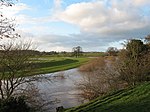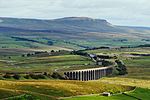RAF Helperby
Military units and formations established in 1916Pages containing London Gazette template with parameter supp set to yRoyal Air Force stations in YorkshireRoyal Air Force stations of World War II in the United KingdomUse British English from November 2021 ... and 2 more
World War I airfieldsWorld War I sites in England

RAF Helperby (also known as RAF Brafferton), was a First World War era airfield near to the villages of Brafferton and Helperby in North Yorkshire, England. It was used initially by No. 33 Squadron RAF, and then later by No. 76 Squadron RAF in the home defence (HD) role. During the Second World War, the site was used as an ammunition supply depot, being operated by No. 92 Maintenance Unit RAF, and also by the USAAF. The site was known to have stored mustard gas and other chemical weapons during the period of the Second World War.
Excerpt from the Wikipedia article RAF Helperby (License: CC BY-SA 3.0, Authors, Images).RAF Helperby
Geographical coordinates (GPS) Address Nearby Places Show on map
Geographical coordinates (GPS)
| Latitude | Longitude |
|---|---|
| N 54.134 ° | E -1.318 ° |
Address
YO61 2RF , Brafferton and Helperby
England, United Kingdom
Open on Google Maps











